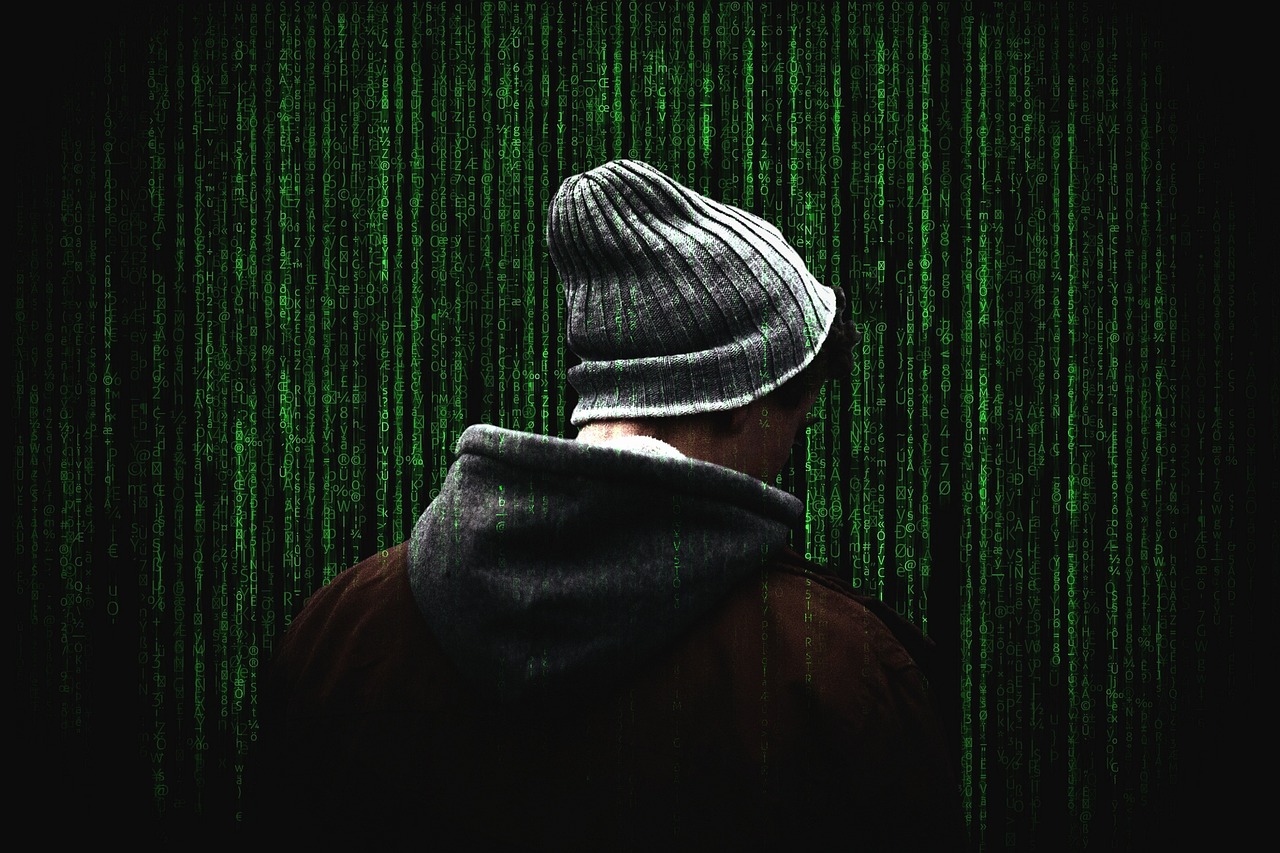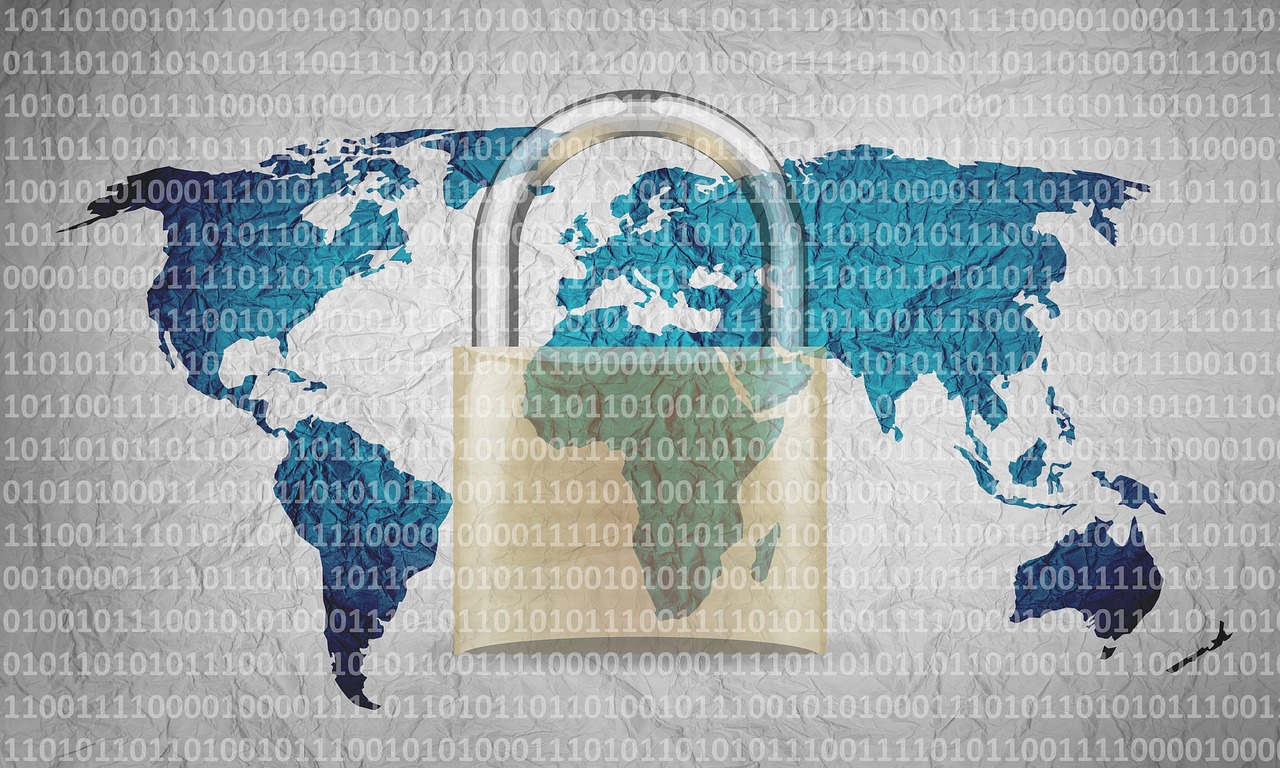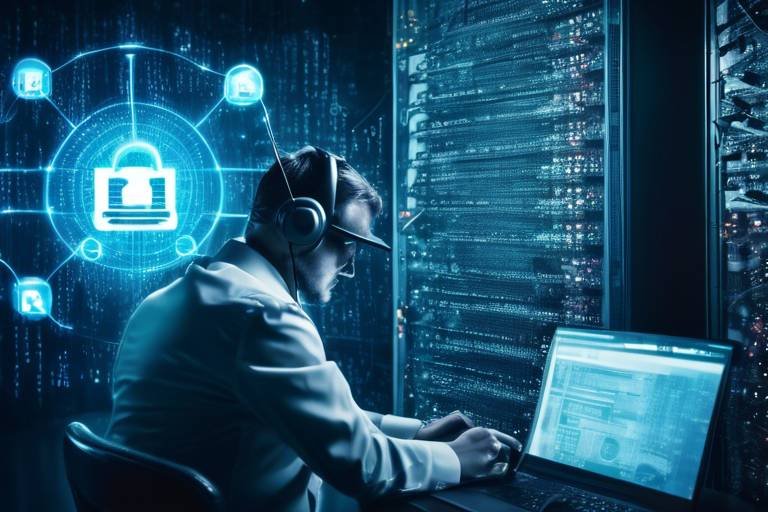How Do Cybersecurity Professionals Identify Threats?
In today’s digital age, the landscape of cybersecurity is constantly evolving, making it crucial for cybersecurity professionals to stay one step ahead of potential threats. But how do they actually identify these threats? It's like being a detective in a world filled with cyber criminals, where every click could lead to a hidden danger. Cybersecurity experts utilize a variety of techniques and methodologies to sniff out risks before they can cause harm. From understanding the threat landscape to employing advanced technologies, their approach is both systematic and dynamic.
First and foremost, cybersecurity professionals must develop a comprehensive understanding of the threat landscape. This involves recognizing the different types of threats that exist, such as malware, phishing, and insider threats, and assessing their potential impact on organizations. Imagine trying to navigate a minefield without knowing where the mines are buried; that’s what it’s like for cybersecurity teams if they lack this foundational knowledge. They conduct thorough risk assessments to evaluate vulnerabilities within their systems, which allows them to prioritize where to focus their attention.
Another key component in identifying threats is the utilization of threat intelligence. This is essentially the collection and analysis of data from various sources to stay informed about emerging threats. Think of it as having an early warning system that alerts you to potential dangers on the horizon. Cybersecurity professionals sift through mountains of information, including reports from security vendors, government advisories, and even news articles, to piece together the current threat landscape. By doing so, they can anticipate new vulnerabilities and attack methods before they become a reality.
Understanding the various threat landscapes is crucial for cybersecurity professionals. They categorize threats into several types, such as:
- Malware: Malicious software designed to harm or exploit any programmable device.
- Phishing: Fraudulent attempts to obtain sensitive information by disguising as a trustworthy entity.
- Insider Threats: Risks posed by individuals within the organization, either intentionally or unintentionally.
This categorization helps professionals to tailor their strategies effectively, ensuring they focus on the most pertinent risks.
One of the most effective ways cybersecurity experts identify threats is through threat intelligence. This data-driven approach involves analyzing information from a variety of sources to stay ahead of cybercriminals. By leveraging threat intelligence, professionals can identify patterns and trends that may indicate a potential attack.
One method of gathering threat intelligence is through Open Source Intelligence (OSINT). This involves collecting publicly available information to identify potential threats. Cybersecurity experts might scour forums, blogs, and even social media to gather insights about adversaries and their tactics. It’s like piecing together a puzzle where every piece of information can reveal a bigger picture of potential threats.
Monitoring social media platforms is another proactive approach that can uncover discussions about potential threats or vulnerabilities. Cybersecurity professionals keep an eye on trending topics and conversations that might indicate emerging risks. For instance, if a new vulnerability is being discussed widely, it could signal a trend that organizations need to prepare for.
On the flip side, the dark web serves as a hub for illicit activities. By monitoring these hidden spaces, cybersecurity professionals can identify emerging threats and gather intelligence on potential attacks. It’s like being a spy in the underworld of the internet, where valuable insights can be gained to protect organizations from future harm.
Another innovative technique used by cybersecurity professionals is behavioral analysis. By analyzing user behavior, they can detect anomalies that may indicate a security threat. This is where advanced technologies like machine learning and artificial intelligence come into play, enhancing their detection capabilities. Imagine having a smart assistant that learns your habits and alerts you when something feels off—that’s the power of behavioral analysis in cybersecurity.
Once a threat is identified, having effective incident response strategies is critical. Cybersecurity professionals develop comprehensive plans to address incidents swiftly and efficiently, minimizing potential damage. This involves a systematic approach to handle incidents, ensuring that no stone is left unturned.
After an incident occurs, forensic analysis helps professionals understand the nature of the threat. This process involves examining systems to identify vulnerabilities and prevent future attacks. It’s akin to a crime scene investigation where every detail matters, and understanding what went wrong is essential for preventing similar incidents in the future.
Finally, continuous monitoring of systems and networks allows cybersecurity professionals to detect threats in real-time. This proactive approach ensures a rapid response to potential breaches, minimizing risks and safeguarding sensitive information. It’s like having a security camera that never blinks, always on the lookout for suspicious activity.
- What is the role of threat intelligence in cybersecurity? Threat intelligence helps professionals stay informed about emerging threats and vulnerabilities, allowing them to anticipate and mitigate risks.
- Why is behavioral analysis important? Behavioral analysis enables cybersecurity teams to detect anomalies that could indicate a security threat, enhancing their overall detection capabilities.
- How does continuous monitoring help in threat detection? Continuous monitoring allows for real-time detection of potential threats, ensuring a swift response to minimize damage.

Understanding Threat Landscapes
In the ever-evolving world of cybersecurity, understanding the threat landscape is akin to navigating a treacherous sea. Just as sailors must be aware of storms, currents, and hidden reefs, cybersecurity professionals need to comprehend the various types of threats that can impact their organizations. These threats can range from malware and phishing attacks to more sophisticated tactics like ransomware and zero-day exploits. Each type of threat has its own unique characteristics and potential consequences, making it essential for professionals to stay informed and prepared.
To effectively identify and mitigate risks, cybersecurity experts must categorize threats into several distinct types. Understanding these categories not only helps in recognizing potential dangers but also aids in devising appropriate countermeasures. Here are a few common categories of threats:
- Malware: This includes viruses, worms, and trojans that can disrupt or damage systems.
- Phishing: Deceptive emails or messages designed to trick users into revealing sensitive information.
- Ransomware: Malicious software that encrypts data, demanding payment for decryption.
- Insider Threats: Risks that originate from within the organization, often from disgruntled employees or negligent actions.
- Denial of Service (DoS): Attacks aimed at overwhelming systems, rendering them unavailable to users.
Each of these threats carries its own weight in terms of impact. For instance, a successful ransomware attack can cripple an organization, leading to significant financial losses and reputational damage. On the other hand, a phishing attempt might result in compromised credentials, opening the door to further attacks. Understanding the potential impact of these threats is crucial for prioritizing responses and resource allocation.
Moreover, the landscape of threats is not static; it is continuously shifting as technology advances and new vulnerabilities are discovered. Cybercriminals are constantly refining their tactics, making it imperative for cybersecurity professionals to adopt a proactive approach. This means not only understanding current threats but also anticipating future risks. By staying informed about emerging trends and potential threats, organizations can better prepare themselves against the tide of cybercrime.
In conclusion, understanding the threat landscape is the foundation upon which effective cybersecurity strategies are built. By categorizing threats, assessing their potential impact, and staying ahead of emerging risks, cybersecurity professionals can create a robust defense against the myriad of dangers lurking in the digital world. Just as a well-prepared sailor navigates safely through rough waters, a knowledgeable cybersecurity expert can safeguard their organization against the ever-present threats of the cyber seas.

Utilizing Threat Intelligence
In the ever-evolving landscape of cybersecurity, threat intelligence has emerged as a cornerstone for identifying and mitigating risks. But what exactly is threat intelligence, and why does it matter? Simply put, it's the process of collecting and analyzing information about potential threats that could harm an organization. This information enables cybersecurity professionals to stay one step ahead of cybercriminals, ensuring that their defenses are as robust as possible.
Cybersecurity experts utilize various sources of data to build a comprehensive picture of the threat landscape. By analyzing this information, they can identify new vulnerabilities and attack methods that might not yet be on their radar. This proactive approach is essential for staying ahead of potential threats. For instance, consider the analogy of a weather forecast; just as meteorologists use data to predict storms, cybersecurity professionals leverage threat intelligence to foresee and prepare for possible cyberattacks.
One of the key components of threat intelligence is Open Source Intelligence (OSINT). This involves gathering data from publicly available sources, such as news articles, forums, and even social media. By piecing together this information, cybersecurity experts can gain valuable insights into the tactics, techniques, and procedures used by adversaries. For example, if a hacker group is discussing a new exploit on a public forum, cybersecurity teams can quickly adapt their defenses to mitigate that risk.
Furthermore, the importance of social media monitoring cannot be overstated. Cybercriminals often share their exploits or vulnerabilities on social platforms, either directly or indirectly. By keeping an eye on these discussions, professionals can gather crucial intelligence that helps them anticipate and neutralize threats before they escalate. Think of it like eavesdropping on a conversation where someone is planning a heist; with the right information, you can thwart the plan before it even gets started.
Another critical area of focus is dark web surveillance. The dark web serves as a marketplace for illicit activities, including the sale of stolen data and hacking tools. By monitoring these underbelly activities, cybersecurity professionals can identify emerging threats and gather intelligence on potential attacks. This is akin to having a spy in the enemy camp; the information gathered can be invaluable in thwarting future attacks.
In summary, utilizing threat intelligence is not just about gathering data; it's about transforming that data into actionable insights. By understanding the threats that exist in the digital landscape, cybersecurity professionals can create a proactive defense strategy that not only identifies potential risks but also mitigates them effectively. As the saying goes, "knowledge is power," and in the realm of cybersecurity, this couldn't be more accurate.

Open Source Intelligence (OSINT)
is a powerful tool in the cybersecurity arsenal, enabling professionals to gather information from publicly available sources. Imagine it as a treasure hunt, where the treasure is valuable data that can help identify potential threats lurking in the shadows of the internet. By leveraging OSINT, cybersecurity experts can gain insights into adversaries, their tactics, and the vulnerabilities they may exploit.
OSINT encompasses a wide range of information sources, including:
- Social media platforms
- News articles
- Blogs and forums
- Government reports
- Academic publications
By sifting through this vast ocean of data, professionals can piece together a clearer picture of the threat landscape. For instance, social media can reveal discussions about new vulnerabilities or emerging attack methods, while forums may contain chatter about exploits that are being developed or tested. This proactive approach allows cybersecurity teams to stay one step ahead of potential attackers.
Moreover, OSINT is not just about gathering information; it's about analyzing it effectively. Cybersecurity professionals employ various tools and techniques to filter out noise and focus on actionable intelligence. This might involve using advanced search queries, data mining tools, or even machine learning algorithms to identify patterns that could signal a potential threat.
In essence, OSINT is like having a radar that detects incoming threats before they reach your organization's defenses. By continuously monitoring open sources, cybersecurity experts can anticipate adversaries' moves and bolster their security posture accordingly. In a world where cyber threats are becoming increasingly sophisticated, OSINT provides a crucial advantage in the ongoing battle for digital safety.
- What is OSINT? OSINT stands for Open Source Intelligence, which involves collecting and analyzing publicly available information to identify potential cybersecurity threats.
- How does OSINT help in cybersecurity? OSINT helps cybersecurity professionals understand adversaries better, anticipate their moves, and identify emerging threats by analyzing data from various open sources.
- What types of sources are used in OSINT? OSINT can include information from social media, news articles, blogs, forums, government reports, and academic publications.
- Is OSINT only useful for large organizations? No, OSINT can be beneficial for organizations of all sizes, as it helps in identifying vulnerabilities and potential threats regardless of the organization's scale.

Social Media Monitoring
In today's digital age, social media platforms are not just avenues for personal expression; they have become critical battlegrounds for cybersecurity professionals. By engaging in , these experts can uncover discussions about potential threats or vulnerabilities that might otherwise go unnoticed. Imagine being able to tap into the conversations happening in real-time across various platforms, gaining insights that could protect your organization from an imminent attack. This proactive approach is akin to having a digital ear to the ground, listening for whispers of danger before they escalate into full-blown crises.
Social media monitoring allows cybersecurity professionals to collect valuable data from various sources, including Twitter, Facebook, and even niche forums. By analyzing this data, they can identify trends, emerging threats, and the tactics that adversaries might employ. For instance, if a particular vulnerability is being discussed widely, it could signal an uptick in attempts to exploit that weakness. This information is crucial for organizations looking to stay one step ahead of cybercriminals.
Moreover, social media platforms often serve as a gathering place for hackers to share their exploits and techniques. By keeping a close eye on these interactions, cybersecurity professionals can better understand the mindset of their adversaries. They can discern patterns in behavior, such as the types of attacks that are gaining traction or the tools that are being touted as the latest and greatest. This intelligence can then inform an organization's security posture, allowing them to fortify their defenses against specific threats.
To illustrate the importance of social media monitoring, consider the following table that outlines key benefits:
| Benefit | Description |
|---|---|
| Real-time Alerts | Immediate notifications about potential threats based on social media chatter. |
| Trend Analysis | Identifying patterns in discussions that could indicate emerging threats. |
| Competitive Intelligence | Understanding how competitors are responding to threats and vulnerabilities. |
| User Sentiment | Gauging public perception of security measures and potential vulnerabilities. |
In conclusion, social media monitoring is an indispensable tool in the arsenal of cybersecurity professionals. By harnessing the power of social media, they can not only detect potential threats but also gain a deeper understanding of the cyber landscape. It's like having a digital crystal ball that helps anticipate moves before they happen, allowing organizations to bolster their defenses and preserve their digital assets.
- What is social media monitoring in cybersecurity? It involves tracking social media platforms to identify discussions about potential threats and vulnerabilities that could impact organizations.
- Why is social media monitoring important? It helps cybersecurity professionals stay informed about emerging threats and understand adversaries' tactics, allowing for proactive defense measures.
- What platforms are most commonly monitored? Popular platforms include Twitter, Facebook, LinkedIn, and various forums where discussions about cybersecurity take place.
- How can organizations implement social media monitoring? Organizations can use specialized tools and software to track relevant keywords and topics across social media platforms.

Dark Web Surveillance
The dark web is often viewed as a shadowy underbelly of the internet, a place where illicit activities thrive away from the watchful eyes of the law. However, for cybersecurity professionals, it serves as a critical resource for identifying potential threats before they escalate. By engaging in , these experts can uncover valuable intelligence that helps them anticipate and mitigate risks.
So, what does dark web surveillance involve? It's not just about browsing hidden forums or marketplaces; it's a systematic approach to gathering and analyzing information. Cybersecurity professionals utilize specialized tools and techniques to monitor discussions, transactions, and trends that may indicate emerging threats. This proactive stance allows them to stay one step ahead of cybercriminals, who often use the dark web to share tactics, sell stolen data, or even recruit for malicious activities.
One of the key aspects of dark web surveillance is understanding the types of information that can be found. Here are some of the most common categories:
- Stolen Data: Personal information, credit card details, and login credentials often surface on dark web marketplaces.
- Malware and Exploit Kits: Cybercriminals frequently sell tools that can be used to compromise systems, making it crucial for cybersecurity teams to monitor these offerings.
- Threat Actor Communications: Forums and chat rooms where hackers exchange ideas and strategies can provide insights into upcoming attacks.
By keeping an eye on these elements, cybersecurity professionals can not only identify potential threats but also gain a deeper understanding of the motivations and methods of cybercriminals. This intelligence can be instrumental in developing effective defenses and response strategies.
Moreover, the insights gained from dark web surveillance can inform other areas of cybersecurity. For instance, if a new type of malware is being discussed, professionals can prioritize patching vulnerabilities that could be exploited by such threats. Additionally, understanding the landscape of stolen data can help organizations better protect their sensitive information.
In conclusion, dark web surveillance is an essential tool in the arsenal of cybersecurity professionals. It empowers them to uncover hidden risks, understand the evolving threat landscape, and take proactive measures to safeguard digital environments. As the internet continues to grow and change, the importance of monitoring the dark web will only increase, making it a vital practice for anyone serious about cybersecurity.
- What is the dark web? The dark web is a part of the internet that is not indexed by traditional search engines and requires specific software to access. It is known for hosting illegal activities but also serves as a platform for privacy-focused communication.
- How do cybersecurity professionals monitor the dark web? They use specialized tools and techniques to gather data from hidden forums, marketplaces, and communication channels where cybercriminals operate.
- Why is dark web surveillance important? It helps identify potential threats and emerging attack methods, allowing organizations to take proactive measures to protect their digital assets.

Behavioral Analysis
In the realm of cybersecurity, serves as a powerful tool for detecting anomalies that could signify a security threat. Imagine walking into a crowded room and immediately sensing that something feels off; maybe someone is acting out of character or behaving suspiciously. This is akin to how cybersecurity professionals approach user behavior within digital environments. By establishing a baseline of normal behavior for users, they can quickly identify deviations that may indicate malicious activities.
Cybersecurity experts employ advanced technologies such as machine learning and artificial intelligence to enhance their detection capabilities. These technologies analyze vast amounts of data to uncover patterns and trends that human analysts might overlook. For instance, if a user who typically logs in from a specific location suddenly accesses the system from a different country, this irregularity could trigger an alert. The system might then flag this activity for further investigation, ensuring that no potential threat goes unnoticed.
Moreover, behavioral analysis is not just about identifying suspicious activity; it's also about understanding the context behind it. For example, a sudden spike in data downloads might seem alarming, but if it coincides with a scheduled project deadline, it could simply be a case of employees preparing for a big presentation. This nuanced understanding helps cybersecurity professionals differentiate between genuine threats and benign activities, reducing the number of false positives and allowing them to focus on real issues.
To illustrate the importance of behavioral analysis, consider the following table that outlines common behavioral indicators of potential threats:
| Behavioral Indicator | Potential Threat |
|---|---|
| Unusual login times | Unauthorized access attempts |
| Accessing sensitive data without a clear reason | Data exfiltration |
| Multiple failed login attempts | Brute force attack |
| Frequent changes to account settings | Account takeover |
In addition to these indicators, professionals often utilize anomaly detection algorithms that can learn from historical data and adapt to new patterns of behavior. This adaptability is crucial in an ever-evolving threat landscape, where attackers constantly develop new methods to breach security systems. By leveraging behavioral analysis, cybersecurity teams can stay one step ahead, proactively identifying threats before they escalate into significant breaches.
Ultimately, behavioral analysis is not just about spotting threats; it's about creating a comprehensive security posture that evolves with the organization. By continuously refining their understanding of user behavior and integrating advanced technologies, cybersecurity professionals can significantly enhance their threat detection capabilities. This proactive approach not only helps in identifying potential threats but also fosters a culture of security awareness within organizations, empowering employees to recognize and report suspicious activities.
- What is behavioral analysis in cybersecurity? Behavioral analysis involves monitoring user actions to detect anomalies that could indicate security threats.
- How does machine learning enhance behavioral analysis? Machine learning algorithms analyze large datasets to identify patterns and deviations from normal behavior, improving detection accuracy.
- Why is context important in behavioral analysis? Understanding the context of user behavior helps differentiate between legitimate activities and potential threats, reducing false positives.

Incident Response Strategies
In the fast-paced world of cybersecurity, having effective is not just a luxury—it's a necessity. When a threat materializes, every second counts, and the difference between a minor incident and a full-blown crisis often hinges on how swiftly and effectively a team can respond. So, what exactly does an effective incident response plan entail? It’s a multifaceted approach that requires preparation, quick action, and continuous improvement.
First and foremost, organizations must establish a well-defined incident response plan (IRP). This plan serves as a roadmap, outlining the specific steps to take when a security incident occurs. It includes roles and responsibilities, communication protocols, and detailed procedures for containment, eradication, and recovery. Think of it as a fire drill: when the alarm goes off, everyone knows exactly what to do. Without this clarity, chaos can ensue, leading to prolonged downtime and significant financial losses.
Another critical component of incident response is forensic analysis. This process involves investigating the incident after it has occurred to understand its nature and impact. Forensic experts meticulously examine systems, logs, and other data to identify how the breach happened, what vulnerabilities were exploited, and what data may have been compromised. This not only helps in addressing the current incident but also plays a vital role in preventing future attacks. By learning from past incidents, organizations can fortify their defenses and reduce the likelihood of recurrence.
Moreover, continuous monitoring of systems and networks is essential. Cybersecurity professionals utilize various tools and technologies to keep an eye on their digital environments in real-time. This proactive approach allows them to detect anomalies that could indicate a potential threat before it escalates. Imagine having a security camera that not only captures footage but also alerts you when something suspicious happens. Continuous monitoring acts like that vigilant eye, ensuring that threats are spotted early and dealt with swiftly.
In addition to these strategies, organizations should also focus on training and awareness. Employees are often the first line of defense against cyber threats, and equipping them with the knowledge to recognize and report suspicious activities can significantly enhance an organization's security posture. Regular training sessions can help create a culture of security, where everyone understands their role in safeguarding sensitive information. It's like teaching a community how to respond to emergencies; the more prepared everyone is, the safer the environment becomes.
Finally, a robust incident response strategy is not static; it must evolve. After each incident, organizations should conduct a thorough review to assess what worked, what didn’t, and how the response can be improved. This iterative process ensures that the incident response plan remains relevant and effective in the face of ever-changing threats. In this way, cybersecurity professionals can turn lessons learned into actionable strategies, continuously enhancing their defenses against future attacks.
- What is an incident response plan (IRP)?
An IRP is a documented strategy that outlines how an organization will respond to cybersecurity incidents, detailing roles, responsibilities, and procedures. - Why is forensic analysis important?
Forensic analysis helps organizations understand the nature of a breach, identify vulnerabilities, and prevent future incidents. - How can continuous monitoring enhance security?
Continuous monitoring allows for real-time detection of anomalies, enabling swift action against potential threats before they escalate. - What role do employees play in incident response?
Employees are crucial in identifying and reporting suspicious activities, contributing to the overall security of the organization. - How often should an incident response plan be updated?
An incident response plan should be reviewed and updated regularly, especially after incidents, to ensure its effectiveness against new threats.

Forensic Analysis
Forensic analysis is a crucial component of cybersecurity that delves deep into the aftermath of a security incident. Think of it as a detective investigating a crime scene, piecing together clues to understand what happened, how it happened, and most importantly, how to prevent it from happening again. When a breach occurs, cybersecurity professionals roll up their sleeves and get to work, utilizing various tools and methodologies to uncover the truth behind the attack.
At its core, forensic analysis involves examining digital evidence from compromised systems. This process can include reviewing logs, analyzing file systems, and recovering deleted files. Each piece of data serves as a breadcrumb leading to the attackers' methods and motivations. By understanding the tactics used, cybersecurity experts can not only fix the immediate issues but also bolster defenses against future threats.
One of the primary goals of forensic analysis is to identify vulnerabilities that were exploited during the attack. This involves a meticulous review of the incident timeline, which can be visualized in a structured table:
| Step | Description |
|---|---|
| 1 | Initial Breach Detection: Identifying the first signs of a security breach. |
| 2 | Data Collection: Gathering logs, files, and other relevant data from affected systems. |
| 3 | Analysis: Examining the collected data to understand the attack vector and methods used. |
| 4 | Reporting: Documenting findings and creating a comprehensive report for stakeholders. |
| 5 | Remediation: Implementing measures to fix vulnerabilities and prevent future incidents. |
Moreover, forensic analysis is not just about understanding the past; it’s also about preparing for the future. By learning from previous incidents, organizations can develop better security protocols and training programs. This proactive approach is essential in a world where cyber threats are constantly evolving.
In addition to technical skills, forensic analysts must also possess strong analytical and problem-solving abilities. They often collaborate with law enforcement and legal teams, especially when incidents lead to potential criminal charges. This collaboration ensures that the evidence collected is admissible in court, which can be pivotal in prosecuting cybercriminals.
Ultimately, forensic analysis serves as a critical feedback loop in the cybersecurity ecosystem. It not only addresses the immediate fallout of an incident but also contributes to a culture of continuous improvement in security practices. By investing in forensic capabilities, organizations can enhance their resilience against future threats, turning past misfortunes into valuable lessons learned.
- What is the main purpose of forensic analysis in cybersecurity? The main purpose is to investigate and understand security incidents to prevent future breaches.
- How long does a forensic analysis typically take? The duration can vary significantly based on the complexity of the incident, ranging from a few days to several weeks.
- Can forensic analysis help in legal cases? Yes, findings from forensic analysis can be used as evidence in legal proceedings against cybercriminals.
- What tools are commonly used in forensic analysis? Tools like EnCase, FTK Imager, and Wireshark are commonly employed for data recovery and analysis.

Continuous Monitoring
In the ever-evolving world of cybersecurity, stands out as a vital practice that helps professionals stay one step ahead of potential threats. Imagine walking through a dense forest; just as you would keep your eyes peeled for any signs of danger, cybersecurity experts must constantly watch their systems and networks for unusual activity. This ongoing vigilance allows them to detect threats in real-time, ensuring that any suspicious behavior is addressed immediately.
Continuous monitoring involves a combination of advanced technologies and human expertise. By utilizing sophisticated tools, cybersecurity professionals can analyze vast amounts of data flowing through their networks. These tools often employ machine learning algorithms to identify patterns and anomalies that may indicate a security breach. For instance, if a user typically logs in from one location but suddenly appears to be accessing the system from another part of the world, this could trigger an alert for further investigation.
One of the most significant benefits of continuous monitoring is its ability to minimize risks. By detecting threats early, organizations can respond swiftly, potentially preventing data breaches that could lead to severe financial losses and reputational damage. In fact, studies have shown that organizations with a robust monitoring strategy are often able to respond to incidents significantly faster than those without such measures in place. This not only protects sensitive information but also fosters trust among clients and stakeholders.
Moreover, continuous monitoring is not a one-size-fits-all approach. Each organization must tailor its monitoring efforts to fit its unique environment and risk profile. This often involves establishing a comprehensive monitoring strategy that includes:
- Network Monitoring: Keeping an eye on network traffic to identify unusual patterns.
- Endpoint Monitoring: Ensuring that all devices connected to the network are secure.
- Application Monitoring: Analyzing the performance and security of applications in use.
In conclusion, continuous monitoring is an indispensable component of a proactive cybersecurity strategy. It enables organizations to not only detect threats as they arise but also to understand the context of these threats, allowing for informed decision-making. As the digital landscape continues to grow and evolve, the importance of maintaining a vigilant watch over systems cannot be overstated. By investing in continuous monitoring practices, organizations can safeguard their assets and ensure a resilient defense against cyber threats.
Q1: What is continuous monitoring in cybersecurity?
A1: Continuous monitoring refers to the ongoing process of observing and analyzing an organization's systems and networks to detect potential security threats in real-time.
Q2: How does continuous monitoring help in incident response?
A2: By detecting threats early, continuous monitoring allows organizations to respond quickly to incidents, minimizing damage and reducing recovery time.
Q3: What tools are commonly used for continuous monitoring?
A3: Common tools include Security Information and Event Management (SIEM) systems, intrusion detection systems (IDS), and advanced threat detection software that utilizes machine learning.
Q4: Is continuous monitoring necessary for all organizations?
A4: While it may not be necessary for every organization, continuous monitoring is highly recommended for those handling sensitive data or operating in high-risk industries.
Frequently Asked Questions
- What are the main types of threats cybersecurity professionals look for?
Cybersecurity professionals focus on various types of threats, including malware, phishing attacks, ransomware, insider threats, and denial-of-service attacks. Understanding these threats helps them develop effective strategies to mitigate risks and protect sensitive information.
- How does threat intelligence help in identifying threats?
Threat intelligence provides cybersecurity experts with critical data about emerging vulnerabilities and attack methods. By analyzing this information, they can stay ahead of potential threats and take proactive measures to safeguard their systems.
- What role does Open Source Intelligence (OSINT) play in threat detection?
OSINT involves collecting publicly available information to identify potential threats. Cybersecurity professionals use this data to gain insights into adversaries' tactics and strategies, allowing them to anticipate and counteract security risks effectively.
- Why is social media monitoring important for cybersecurity?
Monitoring social media platforms can uncover discussions about possible threats or vulnerabilities. By keeping an eye on these conversations, cybersecurity experts can identify emerging risks and respond proactively, enhancing their overall security posture.
- What is the significance of dark web surveillance?
The dark web is often a breeding ground for illicit activities, including the sale of stolen data and hacking services. By surveilling these areas, cybersecurity professionals can gather intelligence on potential threats and better prepare for possible attacks.
- How does behavioral analysis aid in threat detection?
Behavioral analysis involves examining user activities to identify anomalies that may indicate a security threat. By leveraging machine learning and AI, cybersecurity professionals can enhance their detection capabilities and respond to threats more effectively.
- What are incident response strategies?
Incident response strategies are plans developed by cybersecurity professionals to address security incidents swiftly and efficiently. These strategies minimize potential damage and ensure that organizations can recover quickly from breaches.
- What is forensic analysis in cybersecurity?
Forensic analysis is a post-incident examination of systems to understand the nature of a threat. This process helps identify vulnerabilities and informs future security measures to prevent similar attacks from occurring.
- Why is continuous monitoring essential for cybersecurity?
Continuous monitoring of systems and networks allows cybersecurity professionals to detect threats in real-time. This capability ensures rapid response to potential breaches, significantly reducing the risks associated with cyberattacks.



















